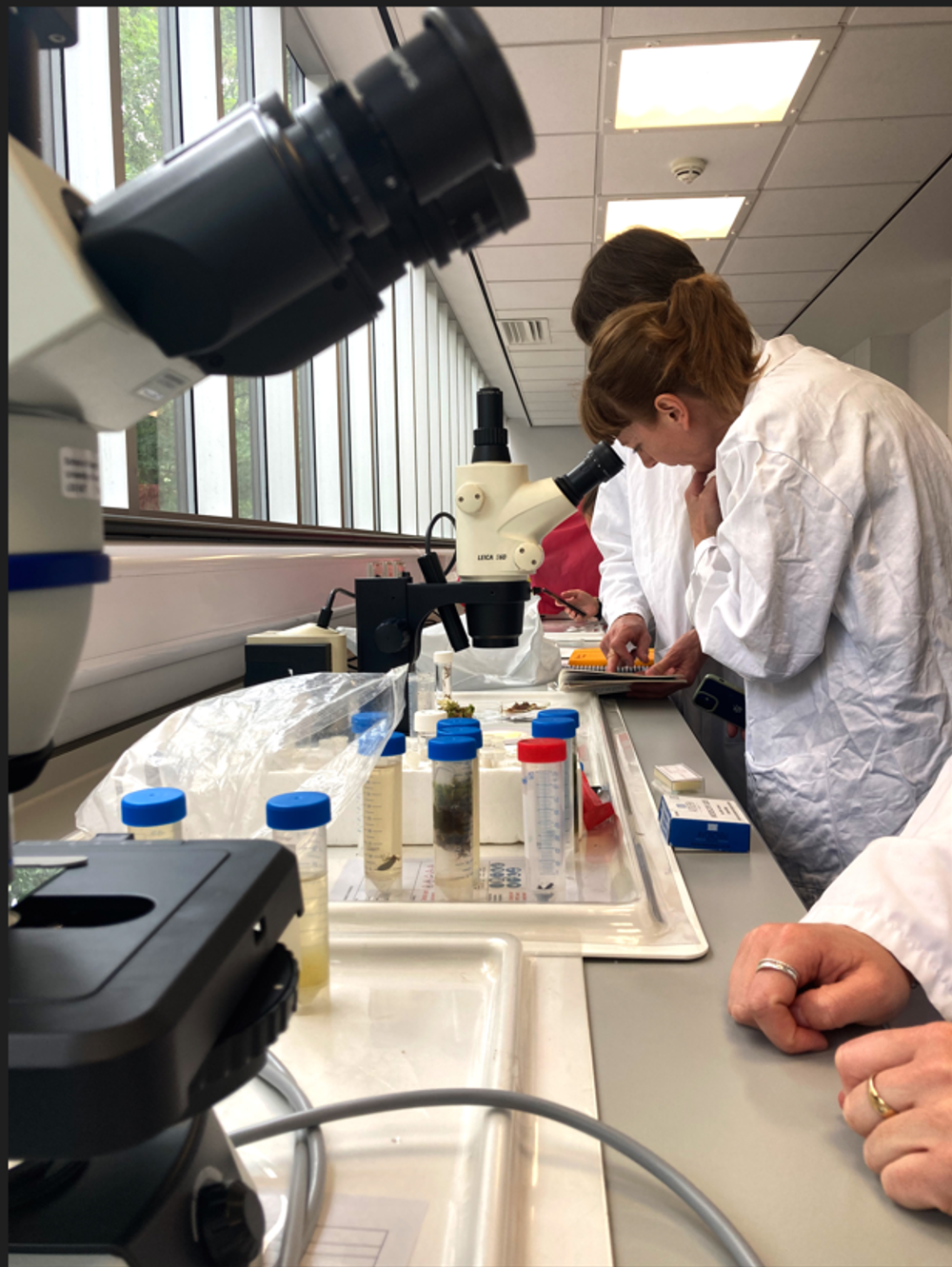This summer, the WaterLANDS UK Artists in residence, Laura Harrington and Feral Practice, who are working with Yorkshire iCASP and partners, at the Great North Bog Action Site, spent a very wet and soggy day at Tennant’s Gill, near Malham Tarn in Yorkshire.
They were carrying out explorative fieldwork with Professor of Aquatic Science Lee Brown, University of Leeds and National Environment Research Council Research Fellow Dr Cat Moody and School of Geography technician Sarah Hunt. The focus was the hidden and microbial worlds of peat pools, hoping to get a more complex understanding of the diversity of life that exists in these habitats over time.
The artists watched Cat and Sarah collecting water, dissolved gas and Environmental DNA samples from five different pools to continue Cat’s research on the effects of peatland restoration on aquatic organic matter, microbial communities and greenhouse gas emissions.
Lee, Fiona and Laura took several sediment, algae and sphagnum samples from each of the pools. They also explored the macro life of the pools by taking net samples.
"Each pool had a different ecology despite being so close together, it was fascinating to see how they compared and to speculate on how communities of species change over time as ponds get older or differ in other ways."
They saw chironomids, dragonfly nymphs, caddis fly larvae and larvae cases left on peripheral moss, and many water beetles.
The plan for the sediment samples is to run them through DNA analysis to understand more about the diversity of fungi, algae, bacteria and invertebrates present. A single 2mm sample of sediment from the depths of the pool will probably contain many thousands of species.
"I find this so exciting – it totally changes how I perceive the water in the container, the water in the pool, even the water in my own body,” said Fiona.
Back to the labs
The following day the artists spent in the School of Geography laboratory with Lee Brown and PhD student Nicky Kerr examining some of their finds under different strength microscopes. One drop of liquid from an algal sludge sample and one drop from the sphagnum tube revealed so much life. Viewed at 100x magnification and using a live camera linked to a laptop they saw diatoms, copepods, zoo plankton, flagellated bacteria, unknown moving slugs. The highlight, right at the end of the day, was a lively tardigrade (common name ‘water bear’ or ‘moss piglet’) which charmed everyone.
"I’ve worked with peatlands for many years but these two days revealed a magical new perspective. Even though it was one the wettest and coldest July days I have felt, I was blown away to another dimension or cosmos. The hidden world we briefly met gave an incredible understanding of the rich diversity of activity and life that is present in these seemingly mundane habitats,” said Laura.
The artists said they engage with the Great North Bog through several perspectives, one of which is scalar. They understand peatland as a nested series of worlds within worlds linked by systemic flows.
"Delving our hands and minds into the bog pools together helped us extend and embody our thinking, especially our thinking-together of the macro, meso and micro of these boggy worlds.”

Text and photos courtesy of Yorkshire iCASP (originally posted on Yorkshire iCASP's website here).


